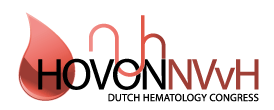TIL products generated from bone marrow metastases for neuroblastoma patients as potential new treatment option
Adoptive transfer of tumor infiltrating lymphocytes (TILs) is a potent therapeutic option for human solid cancers, as proven by the phase III clinical trial for metastatic melanoma. The potential of TIL therapy is also being explored for other so-called ‘hot tumors’ that display a high mutational burden and high immune infiltration. However, also ‘cold tumors’ can be responsive to TIL therapy. This could also potentially hold true for pediatric tumors, such as neuroblastoma. High-risk neuroblastoma is difficult to treat and has a high mortality rate despite extensive treatments, calling for novel treatment regimens. We have previously confirmed the feasibility to generate tumor reactive TIL products from primary neuroblastoma lesions. An alternative source for TIL products can be the bone-marrow (BM) metastasis. BM metastases are present in most high-risk neuroblastoma patients at the moment of diagnosis, and are easily accessible, rendering this source attractive. Therefore, we questioned whether TILs isolated from bone marrow metastasis could be a potential source to generate tumor reactive TIL products.
To test our hypothesis, we collected BM aspirates from 4 neuroblastoma patients, and phenotypically defined the immune cell composition. With the clinically approved expansion protocol for TILs, we obtained TIL expansion that was comparable to those of adult tumors. Expanded TIL products from the bone marrow aspirates contained conventional CD4 T cells, CD8 T cells, and were devoid of regulatory T cells. Similar to the primary neuroblastoma lesions, unconventional γδT cells also expanded efficiently.
The expanded T cells were well capable to produce IFNγ and TNF upon stimulation with PMA/ionomycin. We then determined the tumor reactivity by co-culturing expanded TILs with autologous tumor digest. Tumor reactive T cell responses were observed in 2 out of 4 (50%) tested TIL products, as defined by the expression of the co-stimulation marker CD137 (4-1BB), the production of pro-inflammatory cytokines (IFNγ and TNF), and the expression of the degranulation marker CD107α. Interestingly, the anti-tumor responses did not originate from conventional CD4+ and CD8+ T cells, but rather from unconventional γδT cells in the TIL products, similar to what we observed for TIL products generated from primary neuroblastoma lesions.
These preliminary findings provide new insights in the anti-tumor responses in ‘cold’ pediatric tumors, and suggest a window of opportunity for therapeutic approaches with TIL therapy. If bone marrow aspirates prove to be a sufficient source to generate TIL products for neuroblastoma patients, this would benefit the quality of life and the treatment burden for this patient group.

